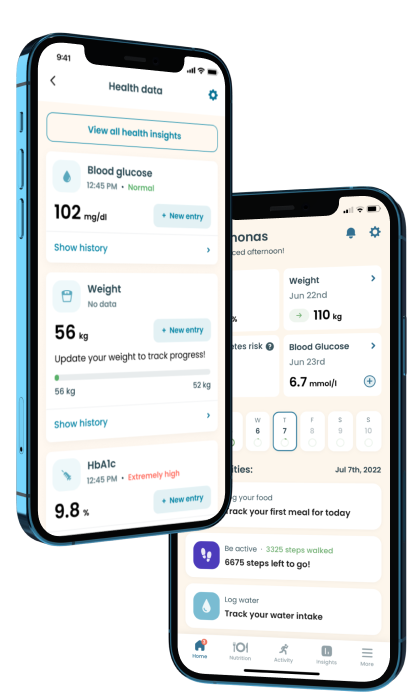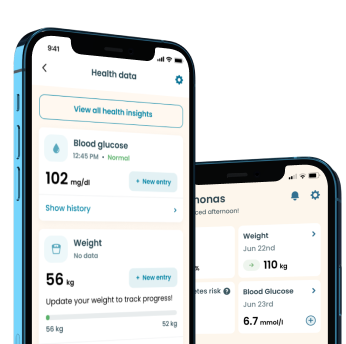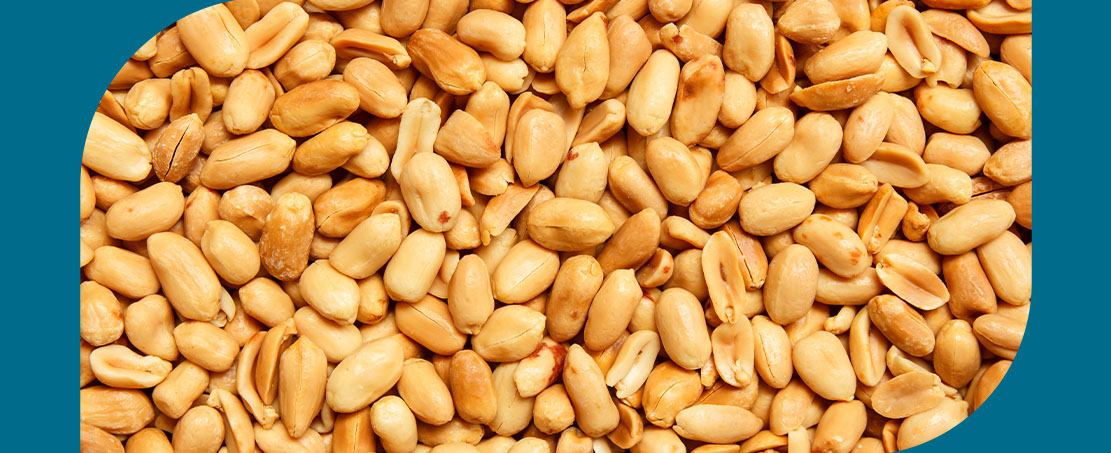Bagel and Diabetes: Can This Snack Fit Into a Diabetic’s Diet?

Not good
50
267 kcal
Bagels are notoriously known for their high sugar content, leading to blood sugar spikes when diabetics eat them. Moreover, the American Diabetes Association advises diabetics to resist unhealthful snacks that can lead to further complications of their condition, and most experts point out bagels as one of these snacks.
However, this food is currently being manufactured in different varieties and isn't outrightly unhealthy as it once was. However, one probing question still lingers — can a diabetic eat bagels? This guide provides a comprehensive answer to this query.
Nutritional value
- Protein 10.7 g
- Carbohydrate 53.3 g
- Fat 1.2 g
- Fiber 3.6 g
- Sugar 1.63 g
- Cholesterol 0 g
What Are Bagels?
Bagels look similar to donuts. However, the major difference is the yeast the former contains and that it’s first cooked to make it denser. Apart from that, the ingredients for making bagels are similar to donuts.
Carbohydrate is the major ingredient of bagels, which can pose many concerns for people with underlying conditions. Bad carbs—which are quite significant in bagels—can lead to blood glucose spikes. Bad carbs could also initiate other complications (like heart disease) and worsen cardiovascular complications.
Take a quiz
Discover what Klinio app can do for you
Healthy diabetes meal plan crafted just for YOU

Personalized workouts with no equipment needed

Track your progress with smart tracking tools

Bagel Nutrition Facts
Bagels have been associated with many unhealthy conditions due to their high carb level. While there are many varieties currently, the plain bagel is still the most popular. This type of bagel is made with refined grains — one of the unhealthy carbohydrates that cause different types of complications.
Plain bagels also have more than a little salt that could go above many people's sodium consumption goals. Yeast is another bagel content considered unhealthy by many experts. Yet, one other source of carbohydrate in bagels is sugar, which isn’t exactly great for health goals.
Varieties of bagels can be quite healthier as they usually contain any of the following ingredients — herbs, spices, and dried fruits.
A normal medium-sized, plain bagel weighing 105 grams offers the following nutrition value:
- Calories: 289
- Protein: 11 grams
- Fat: 2 grams
- Carbs: 56 grams
- Fiber: 3 grams
- Thiamine: 14% of the Daily Value (DV)
- Manganese: 24% of the DV
- Copper: 19% of the DV
- Zinc: 8% of the DV
- Iron: 8% of the DV
- Calcium: 6% of the DV
From the nutrient value of a typical bagel, it’s clear that this type of food can have its consequences for people with underlying conditions. Such consequences may include blood sugar spikes, heart complications, and protein deficiency. Notably, bagels have minimal protein and fat — a concern for people that need such in their diet.
However, bagels aren’t entirely bad as you can add them to meals and still derive positive benefits. There are new varieties currently in the market specifically made to compliment many patients' diet goals. These types of diets have more nutrients with significantly varying ingredient choices.
The next section discusses how bagels can be a healthy food choice for people with underlying diseases, diabetics inclusive.
How Are Bagels Made Healthier?
Bagels are carbohydrate-filled foods, and it’s usually advised that people eat them with discretion. This recommendation is especially important for people with diabetes as carbohydrates are the major cause of spikes in blood glucose levels.
However, all bagels aren’t created the same. There are ways bagels can be made healthier and more appealing to people with underlying conditions or who suffer from blood sugar rise.
Go For Whole Grain Options
Most of the bagels you’ll get from snack stores comprise refined grains and processed white flour, causing you to consume excessive calories and minimal beneficial nutrients. However, there are whole grain options that have more nutrients compared to the typical bagels. Whole grain bagels are by far the healthiest bagels, and the good thing is that they’re surprisingly tasty nutrient-dense foods.
Whole grains, for one, are very rich in vitamins, fiber, minerals and have great healthy plant compounds that refined grains exclude. These rich compositions do a great job stabilizing blood sugar, building body tissues, and aiding digestion.
Several research suggest that consuming up to 3 whole grains servings can help reduce a person's vulnerability to complications like heart disease, several types of cancer, type 2 diabetes, and most cardiovascular conditions. You can enjoy these benefits in foods like whole-grain bread and whole-grain bagels. For whole-grain bagels, go for the ones made from oats, rye, and whole wheat.
Consider Portion Size
One of the most important conditions that bagel lovers must consider is how much they consume. The key to getting the best benefits from bagels is to ensure that you only consume them in moderate proportion; too much of any type of bagels will have negative effects.
When buying bagels, you should consider that it’s more likely to be made of refined grains. As such, you must take note of the nutritional label to know if it’s indeed worth it or perhaps safe to consume.
Packaged bagels have different ingredients and compositions, so it’s not out of place for some to contain different calories per serving. If the one you want to buy has more calories and carbs than your diet recommendation allows, then you should consider other alternatives. You could request whole-grain bagels instead.
If your favorite bagel already has lots of calories, you should consider switching to a healthier choice or heavily restricting your consumption. Also, you should opt for varying types of snacks that are safe. We’ll discuss more on this later.
Be Mindful of Ingredients
The thing about ingredients is that when one is superseding, the other may not be so effective. So, while a bagel brand may contain many supposed healthy nutrients, you should consider the size of each ingredient.
One important nutrient is fiber. Namely, you have to ensure that fiber makes up to ½ of the total carb in your bagel.
Another major ingredient is the type of grain. Whole grains should be the number one option for health-conscious persons.
Also, brands with added sugars shouldn’t be your bagel of choice. You should stick with brands with minimal to no added sugars.
Last but not least, if you’re on a low sodium diet, you should also ensure that the brand you’re going for doesn’t have a lot of salt.
Choose Your Toppings Wisely
In the United States, bagels are a major meal and are mostly eaten with toppings that have potentially negative effects on health when consumed without caution. Some popular bagel toppings include cream cheese, almond butter, and jams.
These toppings contain many calories — poor for health and could lead to a rise in blood sugar for diabetes patients. Moreover, these toppings usually have saturated fats and added sugars. So, it’s best to reduce or exclude them as regular toppings for your bagels and meals in general.
Other toppings with better nutrient values can replace the aforementioned popular toppings. You should consider using avocado, hummus, nut butter, scrambled eggs, salmon, and sliced turkey instead.
If you don’t mind nice fresh fruits as toppings, you can also go for cucumber, onions, spinach, and tomatoes. Additionally, you have the option of eating your bagels with non-starchy vegetables and delicious and healthy bread.
Bagels and Diabetes
People with diabetes are expected to stick with diets that ensure zero or minimal rise in their blood sugar levels. However, most bagels out there seem to do the direct opposite.
As can be seen from bagels' nutritional value and composition, the donut-like snack is extremely high in calories. Wheat flour, a major ingredient of bagels, is basically carbohydrates and can increase the blood glucose level.
However, as pointed out in the above section, certain varieties can work well for a diabetic, e.g., a small oat bran bagel. While this type of bagel contains as much as 176 calories, it has an impressive 2.5 grams of fiber, which balances out the effect of the calories. Also, this bagel variant contains almost zero saturated fat (the unhealthy type of fat).
In addition, choose whole-grain bagels over those made of processed and refined grains.
It’s important to note that bagels can’t be 100% healthy since all grains are starchy. So the key is to mix up bagels with other healthy foods that contain very small carbohydrates. Also, try incorporating non-starchy vegetables, fruits, and protein-giving food into the mix.
Complimentary Steps to Living Healthier With Diabetes
While we’ve outlined different steps to make bagel a healthy food choice, there are complementary steps people with diabetes can take to ensure they enjoy all its benefits. Here are some of them.
Include Other Healthy Alternative Snacks and Drinks
Although it’s recommended that diabetics eat bagels made from whole grains, alternating them with healthy snacks can help them reduce the impact of the high calories. Whole-grain bread or no-added-sugar fruit juice are great choices.
Obviously, not all bread is great for diabetics, but certain brands obtainable from grocery shops can fit into a healthy diabetes diet. Be sure to read through their nutrition labels before making a purchase.
Obtain Quality Sleep
Quality sleep is essential for healthy living. Lack of rest and poor sleeping can negatively affect your insulin sensitivity and blood sugar levels, while contributing to weight gain. Lack of sleep also increases the hormone cortisol levels, which plays a vital role in controlling blood sugar.
The National Sleep Foundation recommends 7–9 hours of quality sleep daily for young adults. This recommendation simply implies that adequate sleep comprises quality and quantity.
To improve your sleep quality, you can start by creating a sleep schedule, exercising regularly, watching less television before bedtime, and avoiding drinking alcohol or caffeine before bedtime. Limiting your napping time and having a warm shower before sleeping could also help you get adequate sleep.
Manage Your Stress Level
Stressful situations can destabilize your blood sugar levels. When stressed, the body produces hormones called cortisol and glucagon, which cause a rise in the blood sugar level.
Relaxation, exercise, and avoiding stressful situations can help resolve your insulin production issues. More particularly, a study on a group of students proves that meditation, exercise, and relaxation activities (like yoga) can lower blood sugar levels and reduce stress.
Stress can also cause health issues like heart disease, depression, and anxiety. So far, one thing is clear — stress hampers healthy living, especially for diabetics.
Stay Hydrated
Staying hydrated can help to keep your blood sugar within a healthy limit. Drinking water can also help the kidney remove excess sugar from the body through the urine. So, staying hydrated could help to reduce blood sugar levels, rehydrate the blood and lower any diabetic complications.
An observational study review showed that people who consume more water have less chance of having increased blood sugar levels.
Take note that drinks with zero calories and water are best for staying hydrated and reducing blood sugar levels. This means you should avoid or limit your intake of sweet sugary beverages as they can contribute to weight gain, increase blood glucose, and increase the complication of diabetes.
Conclusion
Bagels are more like a double-edged sword for diabetics — they pass as a healthy and unhealthy food for people with diabetes depending on how they’re prepared and their nutrient profile.
So far, this guide points out how to make a healthy meal out of bagels and the types to go for. Following these guidelines are extremely important to ensure that you do not experience blood sugar spikes.
Including bagels into your diabetic diet requires careful planning, and one to do this right is with a diabetic meal planner. Namely, a diabetic meal planner helps you determine the right time to eat bagels and the best meals that match it. One of such excellent meal planners that doubles as a virtual caregiver is our reputable Klinio app.

Download Klinio app!
Get more by downloading our free Klinio App. Analyze your health, form new habits and manage your diabetes anytime, anywhere.
OR
SCAN QR CODE



GET THE APP











